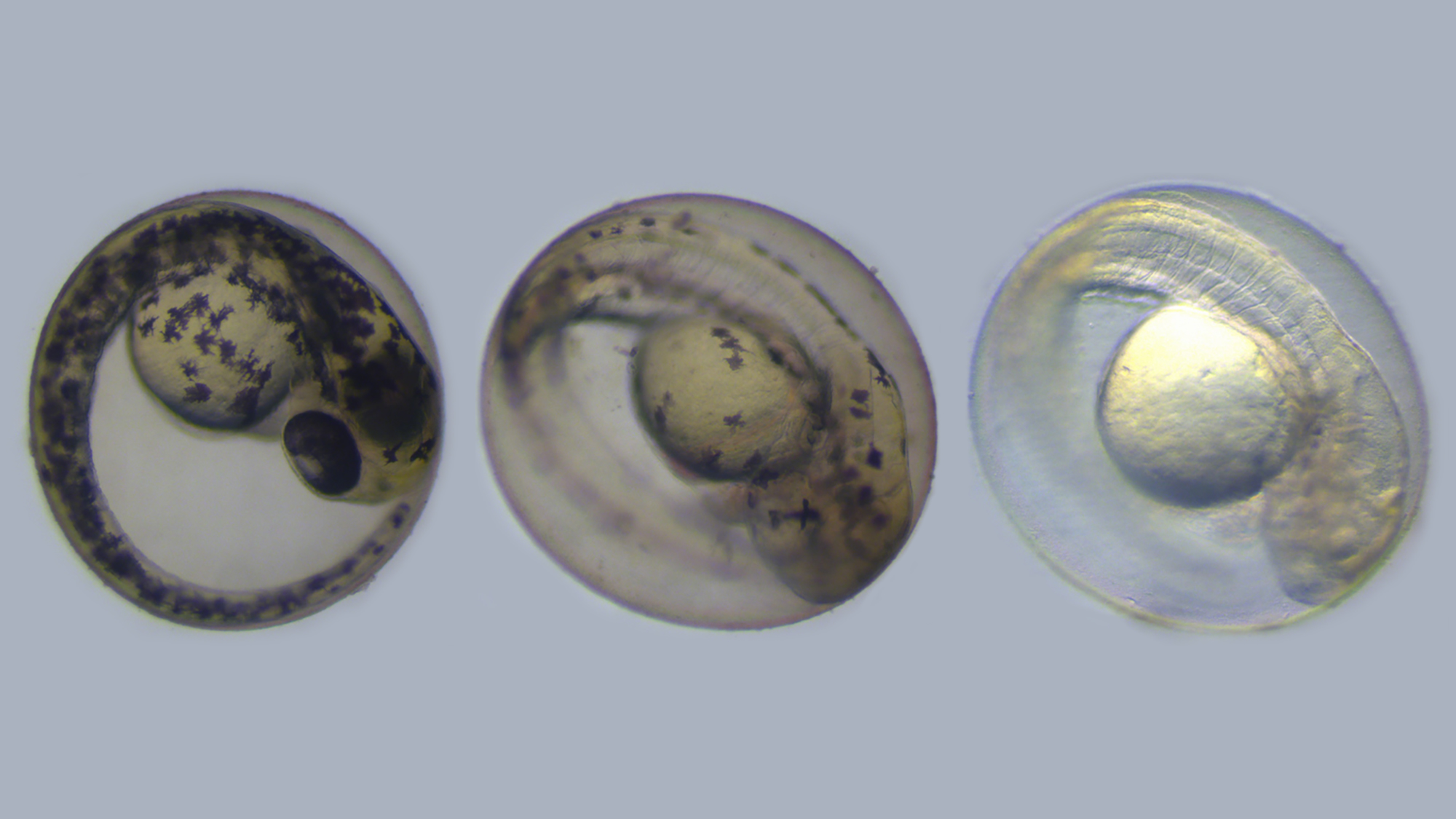The use of gene editing tools allows us to modify organisms and get closer to understanding how they work. And this is what Nerea Montedeoca, now a pre-doctoral researcher at the Department of Medicine and Life Sciences of the Universitat Pompeu Fabra (MELIS-UPF), was doing during her master’s degree when she took this photograph. Here we see three zebrafish embryos 24 hpf (hours post-fertilisation) inside the chorion. The one on the left has the natural pigmentation spots that appear in embryos from this stage onwards. But the other two embryos have less staining – why so?
CRISPR/Cas9 is a tool that resembles a pair of genetic scissors. It is capable of cutting and/or inserting pieces of genetic material into organisms’ genomes. In this case, when Nerea injected this complex, she eliminated the tyrosinase gene, the enzyme responsible for pigmentation synthesis.
The embryo in the middle is a mosaic because it still retains pigmentation in some cells. But the one on the right is a complete knockout for the tyrosinase gene – that is, this gene is inhibited in the whole organism – which means that no pigment is produced and it is completely transparent.
Do you want to see your photo here? Send us images related to science or life at PRBB to ellipse@prbb.org.






